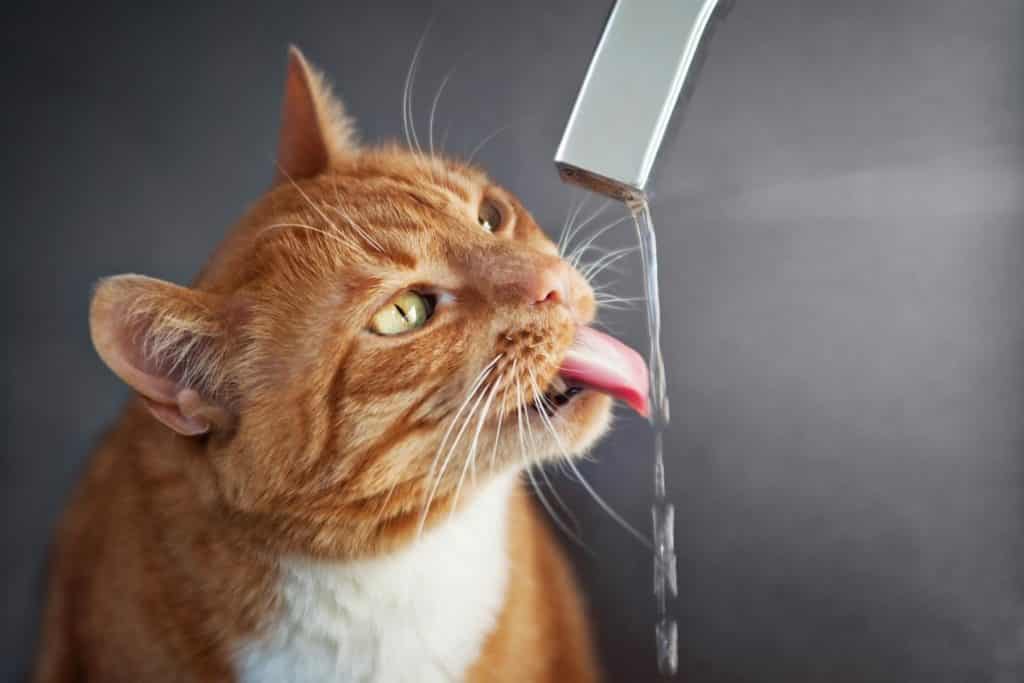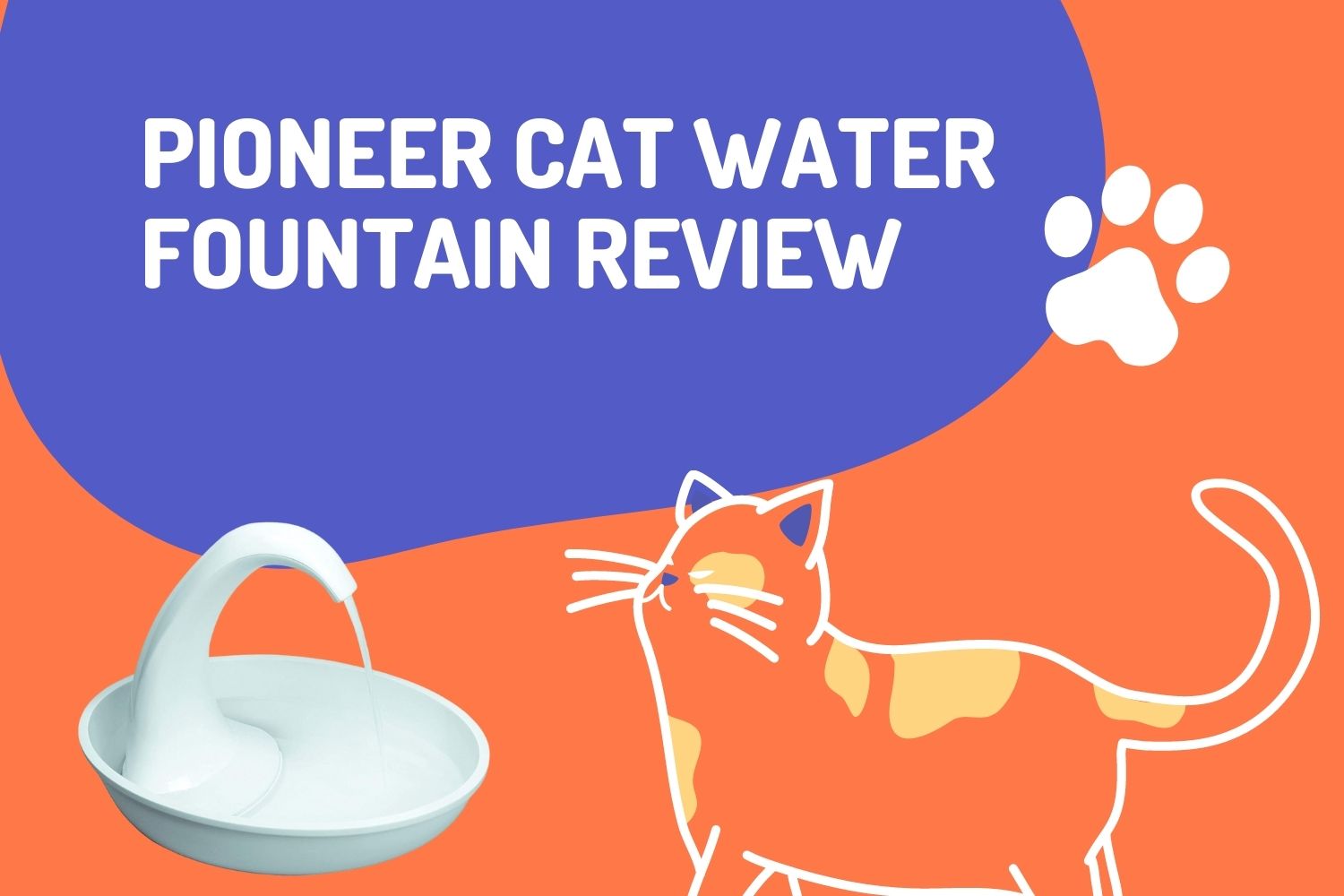
Usually, when you think of a pet drinking out of the toilet bowl, you’re picturing a dog. Most cat owners, though, can tell you that cats are just as likely to do so. After all, it’s easy for them to get up there, and as gross as it may seem to us, the water in there is the same tap water that you fill their water bowl with.
Cats, like dogs, aren’t usually very picky about where their water comes from, and they’re perfectly happy drinking plain old tap water. But, that doesn’t necessarily mean tap water is the best thing for them.
In recent years an increasing number of people are switching to filtered water- either from a carbon filter or in five-gallon jugs from a water supplier- as concerns over the contents of tap water rise.
The water crisis in Flint, Michigan encouraged many people to pay much closer attention to what’s in our tap water and whether or not we should really be drinking it.
Maybe you’re one of the millions of people who’s sworn off tap water and only drinks the pure stuff now, and you feel a little guilty filling up your cat’s water bowl with water you’re scared to drink yourself.
Gravity water bowl for cats can be a great addition to your cat’s accessories these are trustworthy and can supply water uninterruptedly.
Can Cats Drink Tap Water?
The short answer is: it depends. It’s actually the same answer to the question of whether or not you should be drinking your tap water. If you’re in the US, this means it’s very unlikely that your tap water is unsafe for your cat to drink.
That doesn’t mean your cat will happily drink it, though. Cats have low thirst drives, since in the wild they get most of their water from their food. If your tap water is heavily chlorinated, the smell may put your cat off from drinking it.
Fortunately, chlorine evaporates out of water quickly, and leaving the bowl sitting on the counter for an hour or so will fix that problem.
You may also find that they won’t drink water out of a plastic bowl. The plastic can affect the taste and smell of water, and cats will often refuse to drink out of plastic bowls. A simple metal bowl is an easy solution.
In general, as long as your tap water is safe for you to drink, it’s safe for your cats to drink. But that doesn’t really answer the question of whether or not you should be serving them filtered or purified water instead.
Pros of Tap Water for Cats and Why It’s Convenient for Them
Plain-old tap water is by far the easiest solution for giving your cat drinking water. It’s readily available, you don’t need to buy any additional equipment for it, and you can quickly refill the bowl if your cat has finished it all.
Tap water contains minerals like calcium, iron, and magnesium. This is actually quite natural, as most natural bodies of water contain these minerals, and in fact, many organisms rely on the mineral content of the water they drink to supply them with the calcium, iron, and magnesium they need to survive.
The mineral content of your tap water is perfectly safe for your cat, and may actually be important for their overall health. The minerals are typically only present in trace amounts, but they can still prove to be a crucial supplement for your cat’s health.
The chlorine in the water also makes it much safer to drink. Your cat actually risks contaminating their water bowl when they drink. That’s because they typically drink after eating and then cleaning themselves, which involves licking their paws and much of their body. When they go to drink, they then transfer all those bacteria from the floor and their body into their water bowl.
Without the chlorine in the water, all those bacteria have a perfect environment to grow in, and can easily make your cat sick. The chlorine eliminates the bacteria and sterilizes the water.
Tap water is convenient for you, and for the cat. You can fill the bowl quickly and easily in the sink. If the cat runs out of water while you’re out of the house, they can easily access it in the toilet bowl (gross to us, but not to the cat).
Cons of Tap Water
Tap water is not without its drawbacks, though. In many places, tap water contains contaminants that are not or cannot be removed at water treatment plants. Lead is a prime example. Lead leaches into the water from old pipes, and this means that even if it’s removed at the treatment plant, the water just picks up more lead between the treatment plant and your home.
Tap water also contains disinfectants like chlorine, to kill water-borne bacteria and parasites. Many people are nervous about consuming chlorine or giving it to their pets.
Tap water varies in quality and mineral content. The flavor changes, too, and it’s possible that your cat simply won’t like the taste of the tap water where you live, even if it’s perfectly safe for them to drink.
You can overcome many of these problems by using a simple carbon filter attached to the faucet. Filtered tap water provides all the ease and convenience of regular tap water while eliminating many, if not all, of the concerns about it.
When Cats Should Not Be Allowed to Drink Tap Water
There are certainly times when your cat should not be allowed to drink tap water at all. First, if the tap water isn’t safe for you to drink, it isn’t safe for them to drink either. Sometimes this is simply a matter of location.
There are plenty of places in the world, including parts of the US, where tap water isn’t safe for consumption. Inadequate water treatment is one potential reason for this, but the outdated infrastructure is another one. In particular, lead pipes can be a major reason to avoid drinking tap water.
Lead pipes leach this toxic metal into the water supply, and since they often carry the water from the treatment plant to your home, the lead is still in the water when it comes out of your tap.
There are also times when the water is only temporarily unsafe. Construction accidents or extreme weather events can damage water mains, which causes a loss of water pressure throughout the water distribution system.
The pressure loss often prevents the water treatment systems from functioning properly, while simultaneously allowing untreated groundwater to seep into the pipes, which rely on high pressure to prevent such contamination. When this happens, the local civic authorities will issue a “boil water” notice, informing you that the water must be boiled for several minutes before it’s used for drinking or cooking.
When this happens, it’s definitely unsafe to give your cat tap water to drink, unless it’s been boiled first.
To educate feline parents our experts recently write on what do kittens drink as well as we also layout a complete step-by-step process on how to get a kitten to drink water?
Extreme Weather, Tap Water, and How to Deal With It
Extreme weather can affect your tap water in a couple of different ways. As previously mentioned, extreme weather events such as a deep freeze can rupture water pipes severely enough to cause a loss of pressure throughout the whole system, which leads to contamination from the groundwater and makes the water unsafe to drink.
Flooding can also contaminate the tap water. During floods, the water mains and treatment facilities are invariably contaminated by the massive amount of untreated, dirty water. Treatment facilities are literally flooded, and the water mains are backed up as flood waters rise and the flow of water inside the pipes is reversed.
Other extreme weather events may simply damage the pumping systems or the electrical grid that powers them, which will leave your home without running water.
No matter what kind of extreme weather is heading your way, it’s good to prepare. Stock up on bottled water- enough for you and your cat for several days, at least. Fill up every bathtub in your house while the water is still running. You can also fill large pots, bowls, plastic storage containers, and anything else that will hold water.






